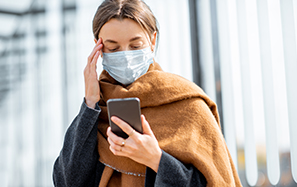An overview of my conclusions with regards to: 1. Infection routes 2. Severity of the disease 3. Measures to prevent infection And my subsequent recommendations.
Lees volledig artikel: My conclusions and recommendations about Covid-19
My conclusions and recommendations about Covid-19
From the end of March I have written articles on this site about COVID-19. By analyzing data, reading the latest international scientific studies and logical reasoning, I have drawn a series of conclusions. I updated these conclusions based on the latest studies. It is important to realize, that many studies come out with opposite conclusions. In addition, I have noticed that a specific situation is regularly highlighted in the media, from which firm conclusions are drawn. When I then examine that situation closely, it turns out that it has been interpreted very one-sidedly.
Below I describe my conclusions for the moment. You can find my underpinnings in previous blogs. I will update this overview if there is reason to do so.
You can jump directly to the separate sections:
1. Routes of transmission
Basically, there are three ways in which someone can be infected with Covid-19.
- Transmission via surfaces. This can occur because the virus ends up on a surface from droplets of someone who is contagious and if someone else touches it and rubs it in the eyes, the virus can penetrate.
- Transmission through larger droplets. These are released by coughing, sneezing, talking or singing from the nose or mouth of someone who is contagious and ends up in another person’s nose or mouth. After which the virus can multiply in that other person.
- Transmission via aerosols. They are released by coughing, sneezing, talking or singing from the nose or mouth of someone who is contagious and can float in the air for a while. They are inhaled by another person and if a certain amount is exceeded (differs per person) then one is infected.
From the many blogs I have written on this subject, you can conclude that these are my conclusions regarding the routes of infection:
- The chance that you will be infected via transmission via surfaces is very small.
- Many studies have shown (already in the 50’s by the famous Wells, but also through research by the RIVM in 2011) that if a virus is inhaled directly, it has a much higher chance of being infected and showing symptoms than if a large drop ends up in your mouth or nose.
- The (big) discussion between scientists, however, is whether the aerosols that float in the air can contain a virus that can infect you and if so, what part of the diagnosed infections are caused by getting a bigger drop in the nose or mouth or by inhaling a certain minimum amount of virus. Realize that in the case of measles virus, scientists agree that it is completely transmitted by air.
- I share the conclusions of the scientists, who state that with regard to Covid-19:
- There is little chance that if a larger drop leaves someone’s mouth it will end up in the other person’s mouth or nose. And if it ends up there, it does not necessarily mean that it leads to an infection at the “receiver”.
- Most infections are caused by inhaling the aerosols of the virus.
- Even if one is infected by talking face-to-face with each other at a short distance for a while, the chance that this infection has happened is much higher because of the inhalation of the aerosols, which are then also released, than because of a larger drop.
- The more virus one inhales, the sicker one can become from it.
- Gradually I see in more and more places that people think that aerosols are responsible for more than 50% of the infections. My estimation is that in reality it is more than 95% (partly because with face-to-face contact the aerosols play a much larger role than many people now think). A percentage that I hear back in contacts with important people behind the scenes from abroad.
- With regard to mouth protection outside health care institutions, after having read a lot about this, my opinion is that it can only be a good measure under special circumstances. Where and when the risk of infection is really high. It directly and indirectly reduces the emission of aerosols and it reduces the inhalation of aerosols. By taking good measures regarding ventilation and air purification, wearing mouth masks can be avoided.
- Large outbreaks in care institutions can be prevented by a sensible policy regarding the ventilation systems and thus prevent residents and staff from breathing in the virus for long periods of time in succession.
2. Severity of the disease
From the mortality figures of Statistics Netherlands it can be concluded that between mid-March and mid-April about 9000 more people died than normal in that period. After that we see under mortality per week. This is normal after a period of considerable over-death. In the age group under 45 years there has been no excess mortality. The higher the age, the higher the excess mortality. Approximately 10% of the deaths are persons under 65 years of age, but these are mainly between 55 and 65 years of age. More than 60% of deaths are over 80 years of age. The vast majority of these people had underlying suffering. In short: the risks of dying from this virus for people under 65 years of age are very small.
It has never been properly determined how many percent of the Dutch population has become infected. My estimation is that between 2.5 and 3 million people have been infected(around 15%). About 12,000 of them ended up in hospital and 3000 in ICUs. Assuming that 3 million people became infected, approximately 0.4% ended up in hospital, 0.1% in ICU’s and 0.25% died. Often this death did not occur because of Covid-19, but with Covid-19.
Studies all over the world show that between 30 and 60% of those who became infected had no or almost no symptoms. The trend is that in recent months the severity of the disease is clearly decreasing among those who have become infected. Fewer people in hospitals and fewer people have died.
The number of people who died by/with Covid-19 in the Netherlands in July and August is only 2 per day. That makes 2 out of the average 400 people who die a day in the Netherlands.
There are more and more indications that, contrary to what was thought in March, a large part of the population will not be infected. The T-cells then play a major role in the protection against possible infection. Where that border lies in a country and when it will be reached is not yet clear. The next 6 months will give more clarity on that point worldwide.
3. Measures to prevent contamination
In these measures, it is important to consider the following points:
- You will only become infected if there is someone in the vicinity who is contagious. If there is very little chance that someone is present who is contagious, then that requires different measures than if that chance is much greater. Otherwise you shoot a mosquito with a cannon. In July and August the chance was always very small in the Netherlands. What will happen in the autumn is still uncertain.
- If you belong to a vulnerable group, you have to avoid getting into a really risky situation in the autumn.
- The measures that are taken must certainly also take into account the consequences for the economy, society and (yes also:) public health. It is becoming increasingly clear what the major effects of the measures have been from mid-March onwards. So, for each measure, more consideration must be given to the extent to which the spread of the virus will be prevented in relation to the nadir of the amalgamation.
All the above weighed against each other, these are my conclusions:
Outside
Because the risks of contamination outside are very small, I don’t think there should be any restrictions. One should only be careful when talking face to face for a long time at a short distance. Even when it’s dark and windless, the risk is somewhat greater. The advantages for society by not having any restrictions outside outweigh the possible (small) disadvantages.
Home
If you have few strangers visiting you, the risk of getting infected at home is small. Good ventilation, higher humidity (between 40 and 60%) can mean good protection when people come to visit. Also don’t speak to each other face-to-face at too short a distance (less than 1 meter).
Public indoor spaces
The vast majority of infections take place in public indoor spaces. With poor ventilation and not the right humidity, aerosols can remain floating for a long time and those present can then inhale them (for a long time). These are the places where the so-called “superspread events” take place. Ventilation systems where too little fresh air is brought in and no provisions are made to remove the virus from the air (filters or purifiers) can also spread the virus over a large number of people present.
In those circumstances, it is highly recommended that open windows/doors are provided (crosswise against each other). A ventilation system will have to be aimed at not recirculating air. There must be a large ventilation rate (the number of times per hour that the complete amount of air in the room is replaced by outside air). A ventilation rate of 9 times per hour is the target number. Using qualified air purifiers and/or filters, the virus is removed from the air as much as possible. With this combination there is a public indoor space, which is Coronaproof.
If there are too many new infections in an area, it is not recommended to be present in those areas for a longer period of time if the ventilation system is not Coronaproof. Wearing mouth protection by all those present will reduce the risk of infections. Here you will find more information about it.
In a number of countries, through time, money and attention, maximum efforts are made to make as much public indoor Coronaproof as possible in order to prevent outbreaks in the autumn and winter. (This results, among other things, in major shortages of certain aids such as CO2 meters and air cleaners. Because the Netherlands is also slow to get started on that point, we will also experience the disadvantages).
I hope that the above will help you better determine which risks you do or do not want to run. Better to assess the policy of the governments. Better to distinguish the wheat from the chaff in the media.
I wish you, our government and our media a lot of wisdom in this.
If you also want to support our work financially with a small donation, click here
Important blogs to read about the above are:
- Checklist
- A first step to quantifying the influence of the aerosols
- Toward an intelligent face mask policy
- Prevent contamination and live as normal as possible
- Aerosols, the crucial missing link
U heeft zojuist gelezen: My conclusions and recommendations about Covid-19.
Volg Maurice de Hond op Twitter | Facebook | LinkedIn | YouTube.






